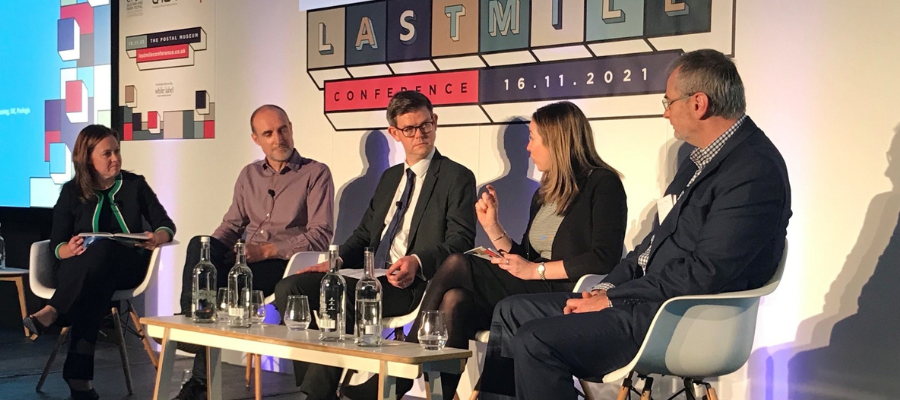🕒 Article read time: 2 minutes
Last Mile Conference delegates urged to change their perceptions about logistics

Senior industry delegates who attended the inaugural London and South East Manufacturing, Industrial and Logistics Conference earlier this week (16 November 2021) were rewarded with a packed and topical agenda, covering the image of the industry, decarbonisation, future workspace, and urban and city logistics.
Held at London’s Postal Museum, the conference was chaired by BBC news presenter Sally Bundock and featured keynote speeches from Christina Calderato, Transport for London’s Director of Transport Strategy and Policy, and Shirley Rodrigues, London’s Deputy Mayor for Environment and Energy.
CHANGING PERCEPTIONS
The first panel session addressed the perception challenges that have faced the industrial and logistics sector for many years. Debating how the sector has changed and developed over the years, the four panellists – Natalie Chapman from Logistics UK, Mike Saunders from Commonplace, Steve Dennington from Croydon Council, and Robin Woodbridge from Prologis – discussed what more can be done to create positive perceptions of the sector and encourage more people to pursue careers in logistics.
THE INVISIBLE SECTOR
Natalie Chapman, Head of Policy – South, Logistics UK, said that often the first perception challenge for the logistics sector is what she described as the apparent “magic of the supply chain”.
“You order a product and something arrives,” she said, “And we don’t think about how it gets to us until it doesn’t. What the last 18 months have shown us with the pandemic is that actually there’s an awful lot that goes on behind the scenes that the general public is just not aware of.”
This inevitably leads to recruitment challenges within the sector. The issue is that aside from more visible roles like HGV drivers, people often do not see or understand the range of roles available within logistics and therefore do not consider pursuing a career in the industry.
DIVERSITY CHALLENGE
A further challenge, Chapman said, is that the logistics workforce is not particularly diverse. Only about 15% of logistics workers are female, 1% of HGV drivers are female, the average age of an HGV driver is about 50, and only one in ten people working in our industry are from a minority ethnic background.
“There are huge parts of the work force that we are not tapping into,” Chapman said, “We need to make sure that we are showcasing these roles. Logistics UK held its first Discover Logistics Careers weekend recently, where our members opened their doors to invite the public to see what they do. It’s something that Amazon has been doing for a while, opening their doors and saying come and see our warehouse, see what it’s all about.”
Asked about the response to the campaign, Chapman said: “The response has been really good and we’re hoping that it really grows to become a regular event.”
*www.logistics.org.uk/skills
Published On: 18/11/2021 16:00:52

Comments Section
If you are a Logistics UK member login to add comments.